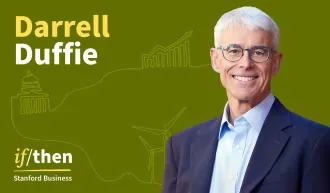Six Reasons to Rethink Aging and Retirement
Researchers at the Stanford Center on Longevity explain that what we think about mental health, exercise, and financial stability is wrong.
February 11, 2015

We are living longer than ever before, but we aren’t saving enough for the longer twilight years. | Reuters/Lucy Nicholson
The good news: Through modern technology and improved living conditions, we’re living longer. In the mid-1800s, life expectancy in the United States was mid-30s. By 1900, we made it to 47. Today, we’re averaging 79 years and counting.
The challenge: We haven’t updated the way we think about our working careers and retirement to correspond. “The culture we live in today, which evolved around lives half as long, does a pretty good job of supporting people up to 50, and then it stops,” says psychology professor Laura Carstensen, founding director of the Stanford Center on Longevity. “As we learn about aging, we’re finding that the malleability, the elasticity, the potential for people to age well is greater than ever previously imagined.”
Her goal? Redesign culture to incorporate today’s longer lifespan. She and senior research scholars Martha Deevy and Kenneth Smith explained to an audience at the 2014 Fall Reunions and Alumni Weekend at Stanford Graduate School of Business how we need to rethink mental and physical health, careers, and financial planning.
1. Mental health does not fall off a cliff when we get old.
We need to stop conflating disease with normal cognitive aging, Carstensen says. Most people do not get Alzheimer’s. Knowledge trajectories go up across ages. We’re underestimating the aging population’s depth of knowledge. Also worth noting: Emotional health actually increases with age. People are less stressed, less anxious, and less angry.
2. Neither does physical health, but education is more important than you realize.
Today most people believe that although we’re living more years, those later years are in poor health. The reality is most of these extra years are healthy ones, Carstensen says.
But education matters — a lot. In one study, people with a higher level of education were more mobile and capable of living independently into those later years over those with fewer years of education.
“The bad news is that the majority of people in this country don’t have high levels of education,” she says. “It’s sobering in some ways to see this steady decline in functional ability in people with less than a high school education or little education because this is the country we’re living in.”
3. We don’t need that much exercise (but we’re still not getting enough).
No one doubts that exercise decreases the likelihood of chronic diseases, cancer, and strokes. It can also be good for your brain — it can help treat depression and may have a relationship to reduced instances of dementia.
But Kenneth Smith points out that over the past 20 years, more people are completely skipping exercise. And the reality is they wouldn’t need to run marathons to see a major impact in their health. One study showed you could run 10 minutes a day and see your health improve.
“As long as you’re getting a certain amount of running in each week, the drop in mortality rates happens and it happens really quickly,” Smith says. For non-runners, think any vigorous activity — swimming, biking. You walkers can still get there, but you’ll have to walk 25 to 30 minutes a day to see the same impact.
4. We have to work longer.
Martha Deevy notes that while we’re living longer, we’re retiring at the same age. That means while we used to live about nine years into retirement, we’ll be spending 22 years in retirement by 2050. “John Shoven, our economist colleague over at the Stanford Institute for Economic Policy Research, is known for saying you cannot finance a 30-year retirement with a 40-year career, yet that’s exactly what we’re trying to do,” Deevy says. “You’ve got to work longer. You’ve got to earn more.”
5. We have to save more money.
Deevy also highlights just how little we’re banking. Only one-third of adults in their 50s have calculated what they need in retirement, she says. Forty-three percent of people age 55 or older have less than $25,000 in retirement savings, and 14% of boomers have no retirement income at all. Add to that that only a small fraction of companies still offer pensions, and fewer people have faith that Social Security will be around when they finally need it.
“You have to think about investing in assets that actually will generate income at the end, and you need to protect those assets,” Deevy says.
6. We need to redesign financial literacy.
The shift from defined benefit plans to defined contribution plans in the mid-1980s led to a proliferation of financial literacy programs, Deevy says, but those programs haven’t been shown to actually improve the financial outcomes of participants. “We’re teaching the wrong things,” Deevy says.
We must rethink how to educate consumers about their savings. Companies, research institutes and government agencies are already shifting how they prepare their people for retirement. Some are making contribution plans look more like pension plans that are default, not opt-in. Companies are also learning that if they want to help their employees with retirement, they have to help those employees with all the other major spending decisions, from buying a house to putting the kids through school.
“There’s this big push starting with large employers to really look at financial wellness in a comprehensive way,” Deevy says.
For media inquiries, visit the Newsroom.
Explore More

“We Have 30 Extra Years”: A New Way of Thinking About Aging

Finding Mindfulness in Traumatic Times



